Here are some things to consider first.
Maybe it’s because we can finally say that we have successfully grown a peach orchard and actually sold at least a single peach. Maybe it’s just the fact that we finally got to meet all the folks that have been watching and praying for us as they drive by for the last 4 years and encountered their excitement. Either way, there’s a question that keeps cropping up.
How do I start my own peach orchard?
Stephenville, TX actually has a rich history of peaches. If you know where to look, you’ll find a “Peach Orchard Rd.” If you have lived in Stephenville for many years, you may remember the Texas Agricultural Research Station actually did a significant amount of work with peaches in town. I’ve heard whisperings of peach trials that produced ludicrously large peaches that are purported to have reached size in excess of a cantaloupe, but I’ve yet to see a picture to prove it. And then there’s Jody Worthington who is a local Stephenville, TX resident that worked at the research station. He is cited in a number peach growing study materials I’ve read over the years and his work has produced ripples that have affected how we planted our own orchard.
All that to say, planting peaches is Stephenville, TX is a great idea! With that in mind though, there’s a few questions that are crucial to knowing whether or not you’ll be successful in planting your own trees. Spending a little time to consider and answer these questions will make a dramatic difference in whether or not you’re successful in growing your own orchard.
- What kind of soil do you have?
- Is your water suitable for irrigating peach trees?
- Do you have time to manage the trees?
- Do you have access to the equipment necessary to manage local crop pressures?
- Do you have access to a place to easily sell your peaches?
What kind of soil do you have?
It will likely come as a surprise to the uninitiated aspiring green thumb, but the condition of your soil can decide whether or not you’ll be able to grow a peach tree successfully. When I say successfully, I literally mean that it is the difference between great success and desperate disappointment. Dirt isn’t just dirt, it has physical and chemical characteristics that make it more or less suitable to any particular crop, peaches included.
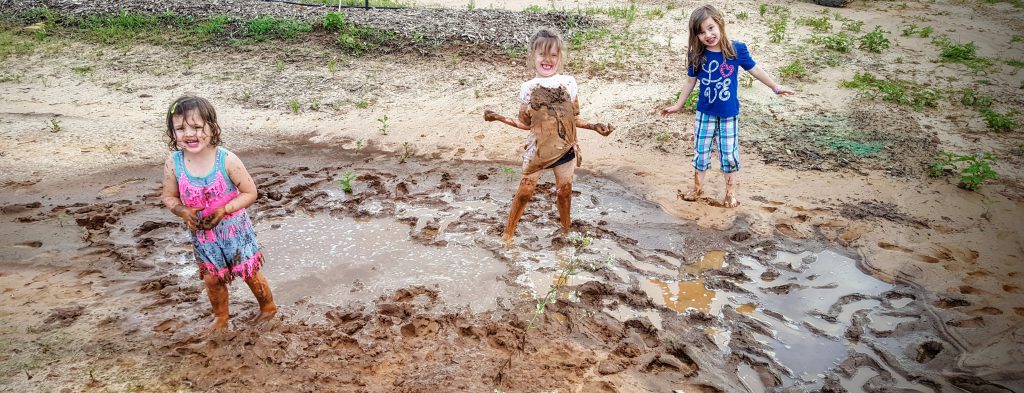
Soil Structure
Most study materials will tell you that peaches prefer a sandy loam soil. While there is some flexibility in this respect, it’s probably one of the easiest places for you to start your journey into making sure you’ll be able to grow your own trees. Grab a shovel and head out to where you want to plant a tree and dig a hole. What comes out of that hole is what your tree will spend its’ entire life growing in, so it is a good idea to know what’s down there before you plant the tree into it.
While a sandy loam soil is preferred, there is flexibility up to a certain point. The primary concern being how well the soil drains. Peach trees will die quite easily from drowning. If the soil you dig out has a heavy clay, you’re going to have a very hard time growing trees in it. A red clay is less of a critical concern (though still far from ideal), but a gray clay indicates extremely poor drainage and likely means your location is wholly unsuitable for peaches. If that’s what you’ve got, you’re going to have to find a different place to grown your trees.
Soil pH
This one will take a little more work than just digging up and poking at some dirt, but it is in my opinion one of the most decisive factors in whether or not you can grow peach trees in your dirt. The pH of a soil is decisive in whether or not your trees can take up the nutrients inside that soil. If the pH is too high or too low, your tree may have plenty of Nitrogen, Phosphorous, and Potassium in the soil, but it will be completely unable to access it. Ideally your soil is around a pH value of 6. Locally we tend to have soil that leans to the higher end of the pH measurements. A pH value of 6.5 is about the upper limit for what will work for peaches. Anything higher than that and your trees will be weak, slow to grow, and extremely susceptible to disease. I have a local friend who asked me to look at their fruit trees that were several years old, but had put on little to no growth in all those years. For reference, in good soil a peach tree that is 3 years old should grow from an 18 inch stick in the ground to a 14 foot diameter beast that’s ready to start putting out loads of beautiful peaches. In contrast, my friend’s trees appeared to have about an inch or two of growth from that season. They were just shy of being completely dead, suffering from a massive infestation of scale, and far from being capable of producing quality fruit. Later research would prove out a soil pH of around 7 pH. Don’t take this one lightly. Get your soil tested so you know what you’re working with. You can’t tell the pH just by looking at it. You have to send it off and get it tested. It isn’t hard to do. Just follow that link to get started.
Site Selection
If the area you plan to plant your trees EVER has significant standing water, it will likely kill your peach trees eventually. An acceptable orchard site must have complete drainage of surface water. If it doesn’t, that one heavy rainfall is going to drown your peach trees some year and crush your heart.

Additional consideration in site selection is whether or not the cold air will properly drain out of it in the winter. Cold air flows downward, hot air rises. In the spring if we have a late frost, a low lying area may have cold enough air to kill the delicate flowers, thereby wiping out your peach crop that year. Folks say you should expect this to happen at least once every seven years even in a well cold air drained area. In a poorly cold air drained area you’re just courting disaster.
Is your water suitable for irrigating peach trees?
Not only do you need access to significant amounts of irrigation to grow a big peach tree in the height of Texas summer heat, you’ll need that water to be suitable for irrigating. From what I understand, even water from the same aquifer can vary from one well to the next. Our well is in the Lower Trinity aquifer. At 45 gallons per minute, it’s considered undersized for the eventual 18 acres of peaches we expect to have planted. Unfortunately that’s the largest size well we are allowed to have due to the soil and water conservation restrictions in place for our size acreage of 25 acres.

Just like your soil, you’ll need to send off samples of your irrigating water. In this case you’re most concerned with the salt content. The dissolved salts that exist in the water can produce an undesirable accumulation of salt at the edges of the irrigation area over many years that can be injurious to peach trees. Because this accumulation occurs over many years, you may not even realize you have a problem until years down the road. Testing now will ensure you don’t have to fight with it in the future. The same folks that handle the soil sampling can handle your water testing.
Do you have time to manage the trees?
Peach trees require a lot of work. Most folks seem to envision a idyllic grove of trees that once planted, will joyfully respond to a bit of watering each year that produce a bounty of juicy peaches. That couldn’t be much further from the truth. It’s said that if a grower were able to work on their peaches full time 40 hours a week, that the most they could likely hope to manage would be about 25 acres of trees. Many of us simply can’t afford the expense of time to manage a full blown orchard of trees. We have jobs and life responsibilities that demand our time and attention. Peach trees will be their own demand.
So what exactly is required outside of just stepping out and plucking a beautiful blushed red peach from the tree? Lots. I’ll just briefly bullet point those that come to mind.
Weed management.
Native grasses and weeds will out-compete a new peach tree and rob as much as 90% of the first year growth if you don’t manage those grasses with herbicides which will also quickly kill a peach tree. You should expect to have to apply Roundup at least 2 or 3 times a year. By the way, even a whiff of that Roundup on the leaves of your baby peach tree will kill your tree. Take extreme care! When we spray for weeks around even mature peach trees we have to spend a significant amount of time pruning away low hanging leaves or water-sprouts that spring up around the base of those trees before we spray at all.
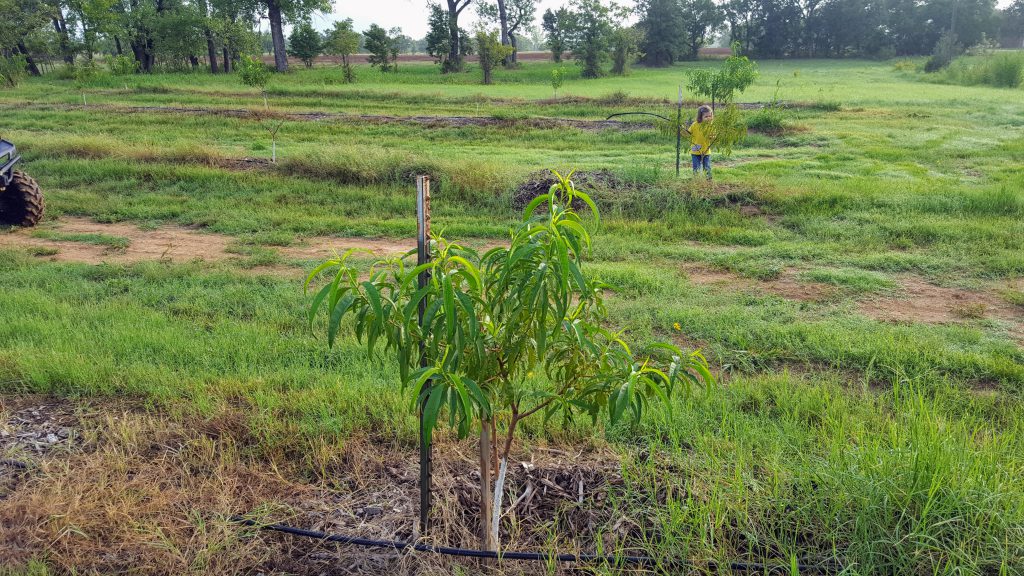
Winter Pruning
A mature peach tree takes as much as 45 minutes to prune each year. When you add that up over the 1000 trees we have right now, pruning is a ridiculously time consuming aspect of growing peach trees. Without annual winter pruning, your peach trees will eventually grow too tall and the fruit will migrate higher and higher in the tree until you can’t reach it. The fruit quality will suffer, the tree vigor will be reduced, and your main branches will not develop well. Each year our pruning will remove around 50% of the wood on any given tree. That wood must then be gathered up and disposed of.
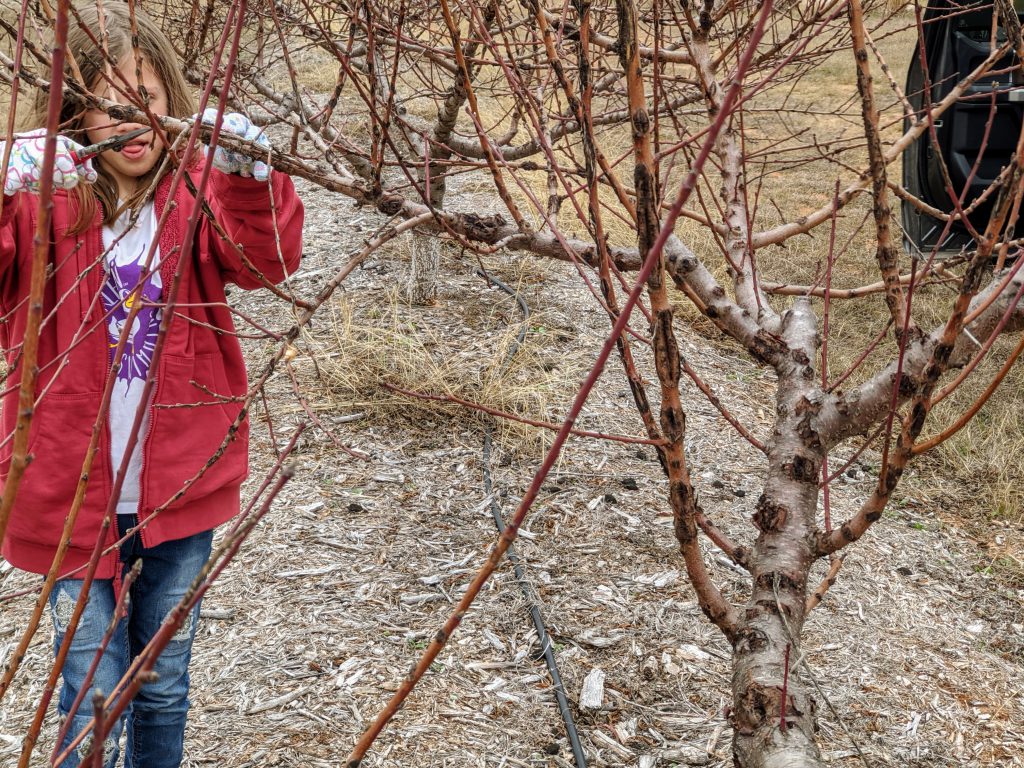
Spring Fruit Thinning
In the spring you’ll have to remove peaches from every single branch until you’re left with only about 1 peach for every 8 inches of branch. If you don’t, your peaches will be must smaller with lower fruit quality and the combined weight of them can very likely break off entire branches from your precious peach trees.
Pest Management….all year long
It’s widely considered true that peach trees cannot be organically grown in our area. The pressures we face from pests and fungal growth will typically reduce the value of a crop so significantly that what is produced will not even be valuable enough to make up for the time you spent growing or even harvesting those peaches.
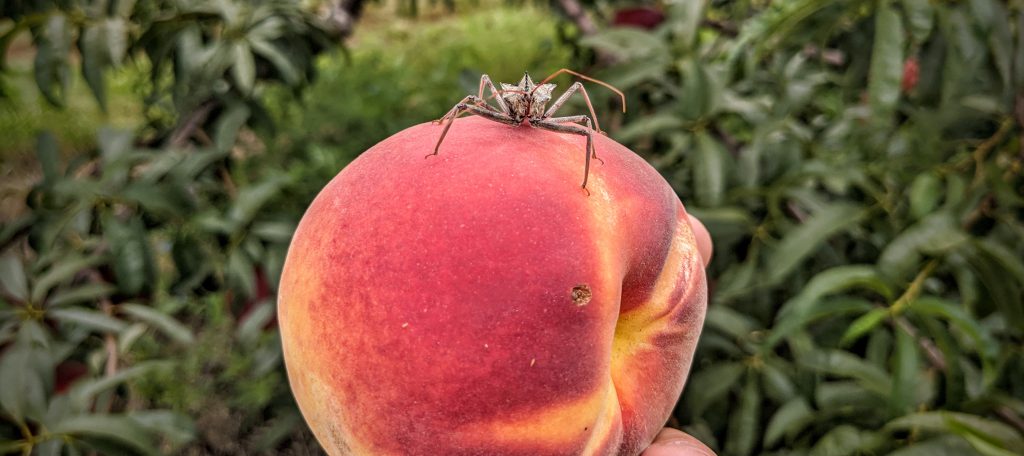
Successfully managing crop pressures in our area involve a chemical spraying schedule that reaches from one end of the year to the other. If you don’t spray for bugs in February when the flower buds are just starting to swell, you’ll have worms crawling out of your peaches in July. If you don’t spray fungicides when it rains heavily, you can have an outbreak of Brown Rot that will devour your peaches before you can eat them.
Harvesting!
Maybe this doesn’t count as hard work. It’s the fun part! That said … harvesting the peaches is hard work. Peaches cannot be mechanically harvested. Every single peach needs a discerning eye to know exactly when it’s ripe and ready to pick, and it needs a hand to reach out and carefully pluck it from the tree. The process of harvesting peaches has proved out to be one of the most injurious moments in the life of a peach if not done with extreme care. Even worse is picking fruit that aren’t actually ripe yet and will fail to ever reach their true potential. You can’t put a peach back on the tree to finish ripening once you’ve picked it!
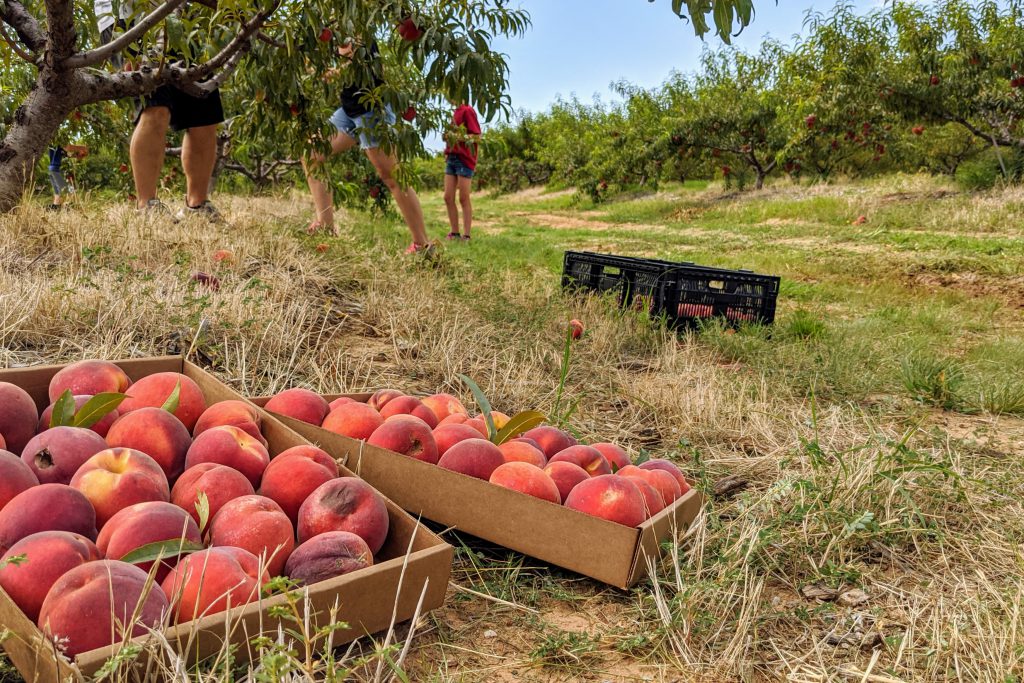
Do you have access to necessary equipment?
There is one piece of equipment that you absolutely need if you’re hoping to grow a large number of peaches. A chemical sprayer and a tractor to run it. Typically chemicals are applied via a tractor mounted spray assembly that will cost you easily over $10k for the sprayer alone. The tractor to power that equipment and the necessary personal protective equipment to use those chemicals safely are another expenditure entirely.
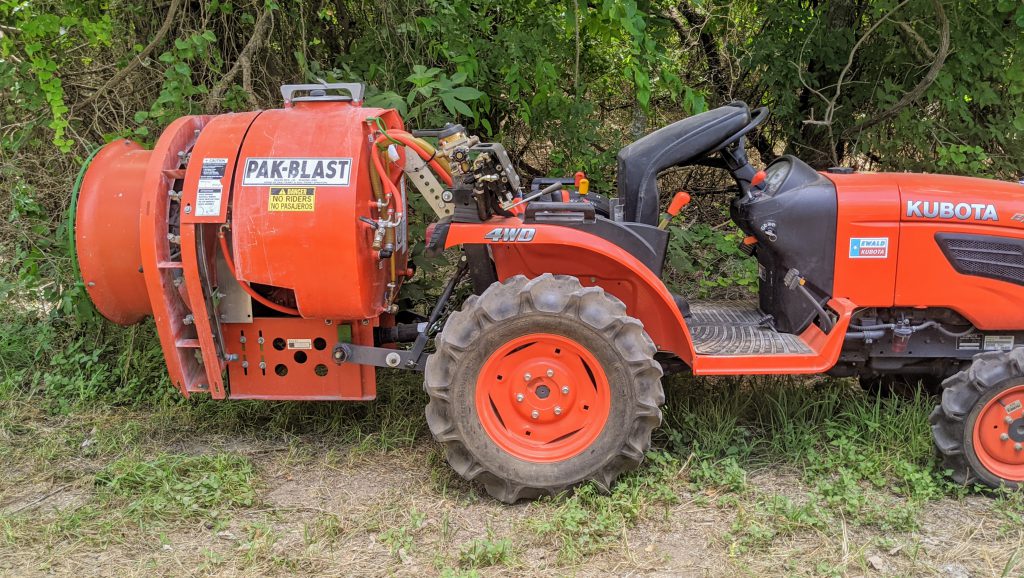
Growing peaches in a tiny orchard can potentially be handled without large equipment. Spraying chemicals can be done with a handheld sprayer and a full Tyvek body suit, but personally I wouldn’t attempt anything beyond a few dozen trees without tractor mounted spray equipment.
Where will you sell your peaches?
It may seem like a silly concern, but knowing how and where you’ll sell your fruit needs to be decided before you plant a single tree. If you’re going to sell your fruit to wholesalers, you’ll want to plant a variety of peach that will remain firm and will hold up to some measure of shipping. If you’re selling peaches locally, you’ll need to plant a variety that is best suited to eating freshly picked.
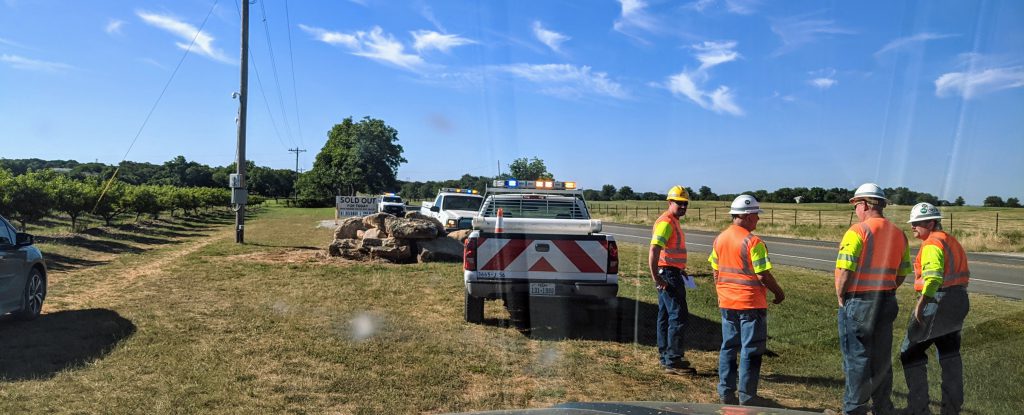
The shelf life of a tree ripened peach isn’t measured it days. It’s more likely measured in HOURS. If you pick your fruit when it is genuinely ripe, it wont last 24 hours outside of refrigeration. If you don’t know where and how you’re going to sell your peaches, you’ll pick your big beautiful peaches just to watch them slowly waste away as you wait for customers.
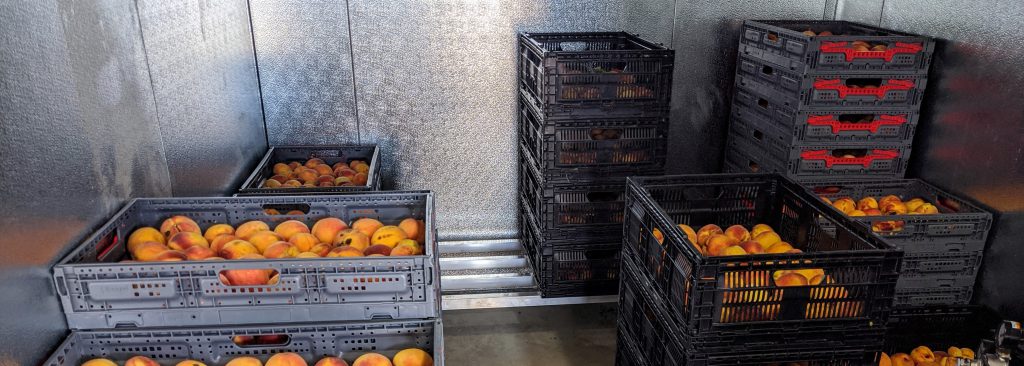
All Systems Are Go!
Ok, so you read this far and you’re still certain you’re ready to plant a hoard of peach trees. Great! Growing peaches is a rewarding experience that will take you through some incredible highs and threaten to break your spirit with some devastating lows.
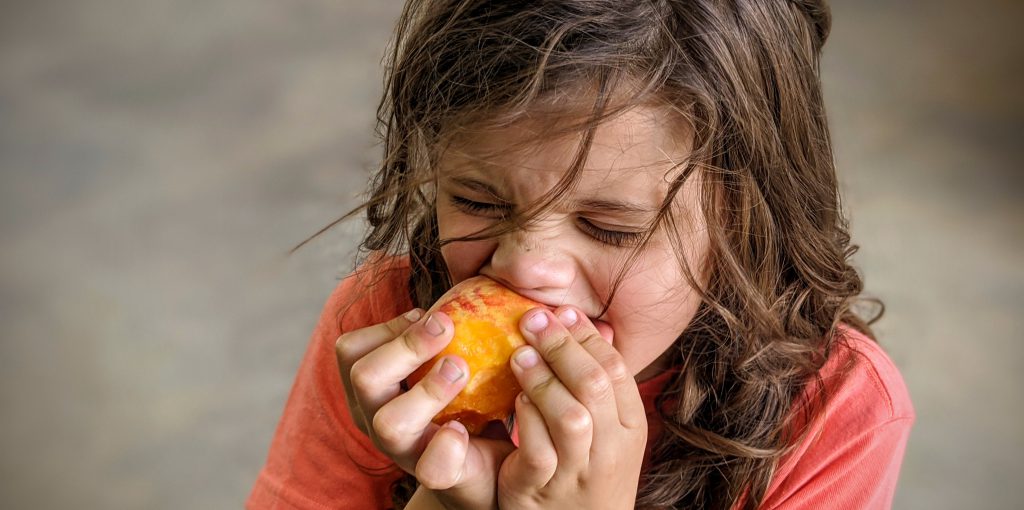
Do one more thing before you let your passion and excitement loose. Read this book. Twice at least.
Most of the things I’ve mentioned are covered in great detail in that book. It’s written by some exceptionally experiences folks who have laid a foundation for all of us to build on with genuine hope of success. I can’t tell you how many times I’ve read that book. It comes out all year long each year to remind me what I’m doing wrong and how to address an issue I’m facing.
Already read that book? Ok, you win. Get ahold of us and we’d be happy to spend some with you answering the questions that I know are already bursting out of you.
You can do this. Good luck!
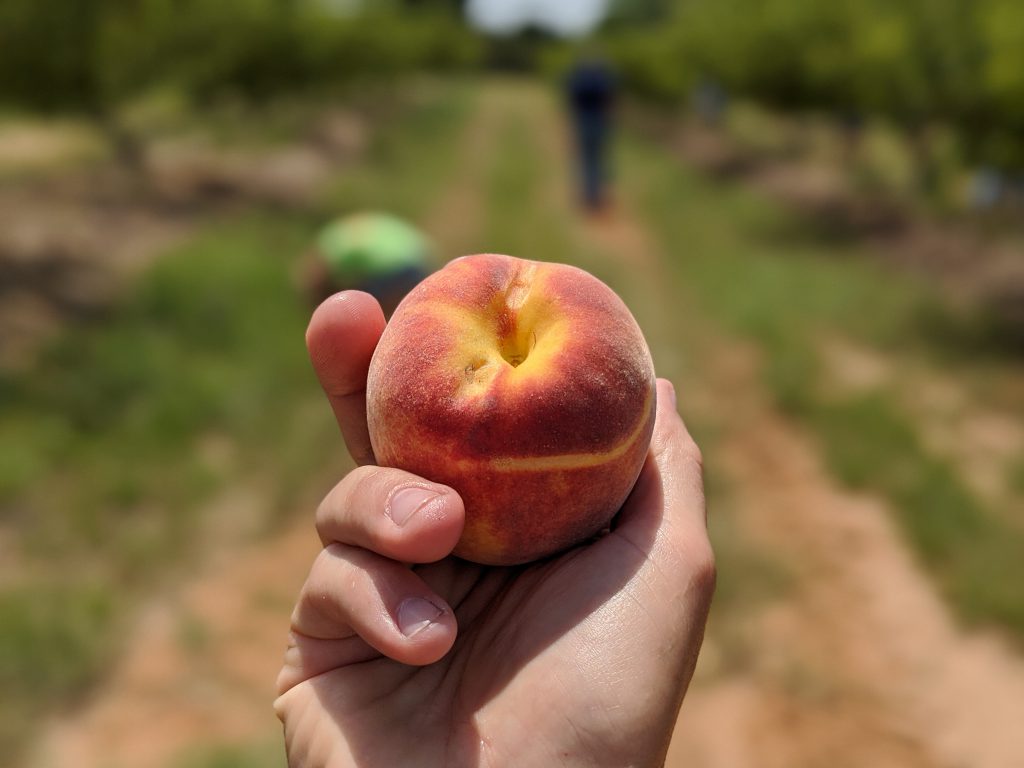

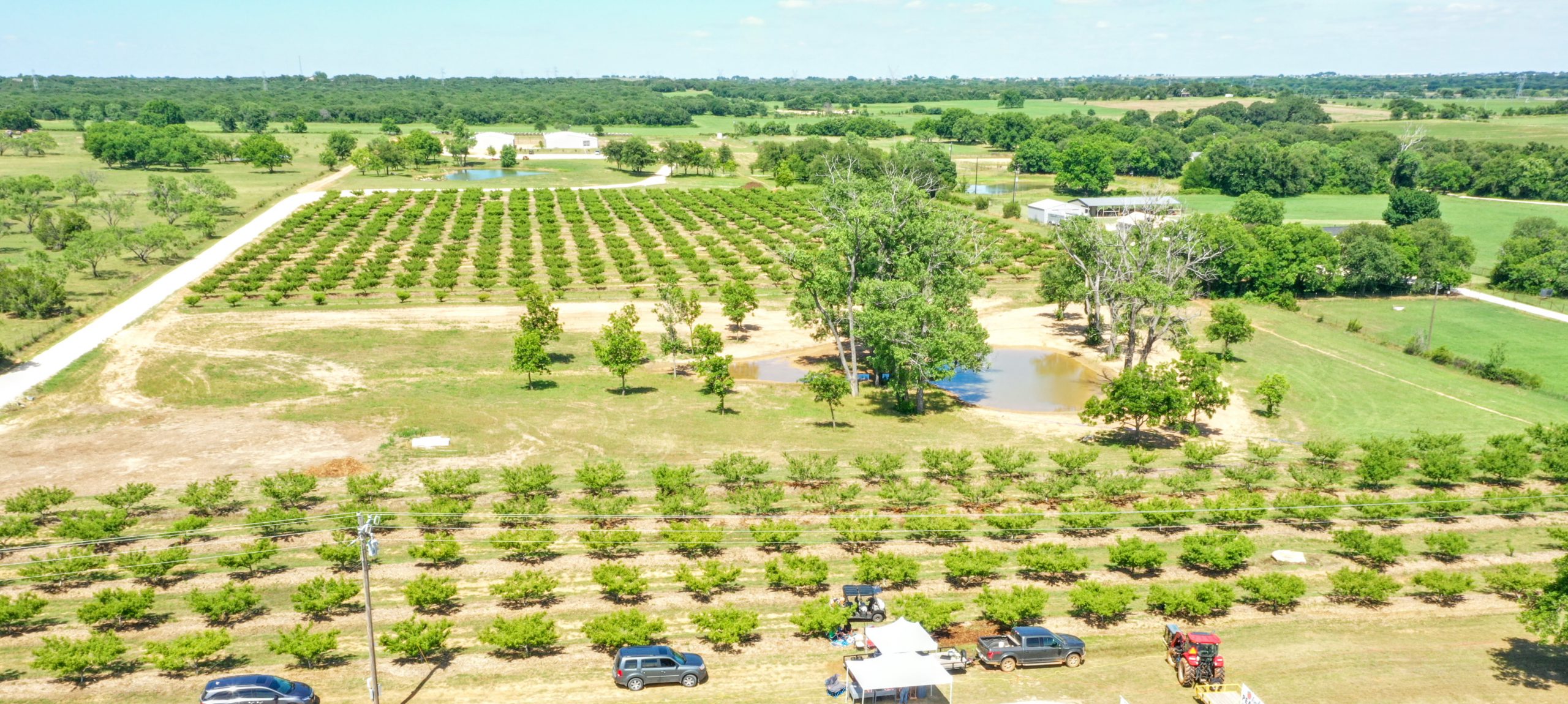
Leave a Comment